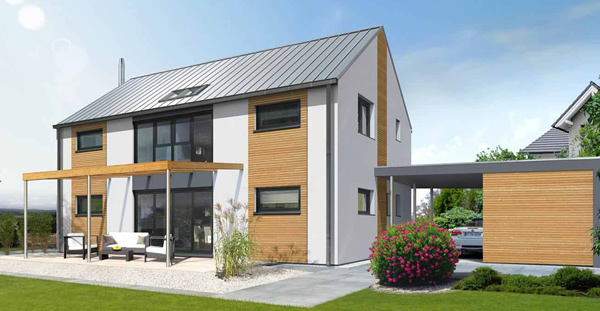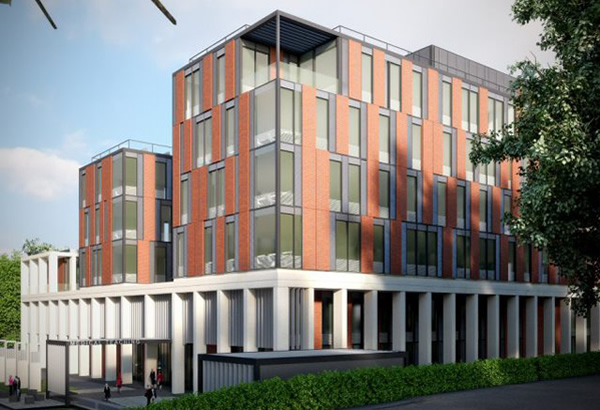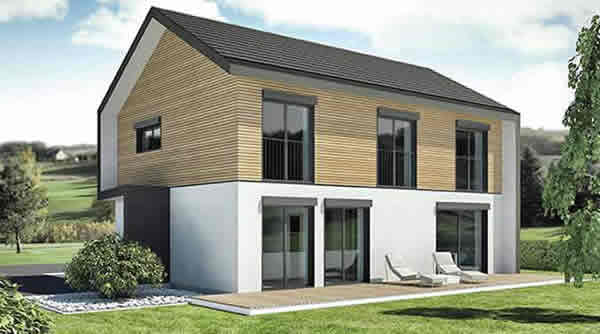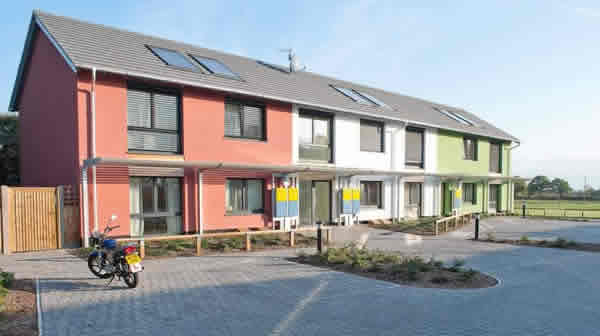 By Paul Foulkes, EchoHouse.
By Paul Foulkes, EchoHouse.
The Passivhaus movement has grown from a desire to lower energy consumption and create better buildings. Passivhaus buildings are designed to provide a high level of comfort while using very little energy for heating and cooling. They are built according to principles developed by the Passivhaus Institute in Germany, and can be certified through an exacting quality assurance process.

So let’s get this out of the way first:
• Passivhaus does not need KNX.
• Passivhaus works perfectly well without KNX.
• I am not advocating that Passivhaus builds have to use KNX to improve them.

Passive and Active Control Working in Harmony
Passivhaus does not need KNX, in the same way as a standard house does not need a BMS system, however, KNX can help to ensure that both the ‘passive’ (e.g. heat from the sun, human bodies, appliances etc) and ‘active’ (e.g. lighting and hot water) parts of a building are at their most effective.
This additional control can prove to be very effective, even a necessity, on larger residential or commercial buildings. For instance, KNX has allowed the University of Leicester’s Centre of Medicine to be controlled to Passivhaus standards to a scale never before achieved in the UK.

Passivhaus does not control or affect occupant use of lighting or domestic hot water (DHW) production, but these become a proportionally larger part of the overall energy consumption of a building once space heating is reduced dramatically by using Passivhaus construction methods.
KNX is perfectly suited to environmental management such as ventilation, shading, humidity control, VOC (Volatile Organic Compounds ), MVHR (Mechanical Ventilation Heat Recovery) and HVAC (Heating, Ventilation and Air-Conditioning). So when an area within a building is affected by solar gain, then effective management of that gain, via active shading, can improve the thermal comfort. This active management can help mitigate over-heating – a potential problem for very airtight buildings. In extreme cases, window opening can be activated, and this is also used to combat high CO2 levels.
PIRs, used for absence and presence detection, can be employed as RTCs (Room Temperature Controllers), and work with humidity and CO2 sensors. KNX can bring this information together. Integrated detectors can also be used for constant daylight control – creating better living and working environments as well having an impact in the reduction of energy consumption by better use of artificial lighting.
In the same way that Passivhaus does not impose restrictions on the occupants, KNX does not remove occupant control. The idea of both philosophies is to work in harmony with the environment and ensure the best possible energy outcomes – one passive, the other active.

Increased Flexibility
Once you start constructing more complex buildings such as MDUs, or simply physically larger buildings, those buildings will benefit from an appropriate building management system (BMS), and this also applies to Passivhaus buildings. In addition, as we move towards integrated buildings within a community, as well as local and smart grids etc, the requirement for a BMS becomes more apparent – see my previous articles on community energy management.
One of the advantages of this control input is that it can allow the architect to be a little more flexible in design – or if the design is a compromise due to location or client requirements, or in the case of Leicester University Centre of Medicine, building size. This ability to include compromise with the design and still achieve the energy savings required, can help less-than-perfect locations for building to be used, and this could include city centre brown-field sites.
KNX enables seamless integration of renewables – with all the monitoring and control options required. It is expandable over time by being scalable and future proof. It even provides the opportunity to link houses together, allowing energy saving and building performance to be compared; and the possibility to create community energy sharing schemes, which is a big advantage for housing associations that want to get the best value for their money. It also enables remote monitoring – the Passivhaus Trust, for example, could have a remote monitoring facility of building performance.
Other Benefits of KNX
Being bus cable, at 30V, KNX reduces the electromagnetic smog in a building – there is no need for a router to connect multiple smart gadgets. This also means that it is more robust, as it does not need Wi-Fi. It is not app dependent, so if your phone battery is flat, you still have complete control with wall-mounted switches and recognisable devices.
KNX isn’t only about substance. It is also about style. Regardless of size, Passivhaus is about designing buildings that are high quality, and these are often of very high value. Surely they deserve something better than a white MK switch? Seriously, Passivhaus and KNX just look so much better together.
Better Together
Passivhaus owners love their buildings – and so they should. They like to know how the building performs. KNX enables monitoring and control of ALL systems – displayed in one format, in multiple locations, locally and remote.
Passivhaus offers a solution to building highly-efficient homes and it also plays a large part in the overall strategy for improved housing. When a Passivhaus estate is planned, the individual buildings become part of an overall solution that often looks beyond just the building, to the community, the services, the way in which the structures interact with the surroundings and how this affects the users. KNX also plays an integral part in this route to better buildings, and better communities.

Conclusion
Fitting triple glazing to a house does not make it passive. Similarly, a thermostat that has an app does not make a smarthome. To make buildings better, we don’t need partial measures. Passivhaus is to building what KNX is to household electrics – so, why keep them apart when they clearly belong together?
Paul Foulkes is an engineer and KNX consultant for EchoHouse, with the ambition of integrating technology and community and making our living environment better. He is also a Business Development Manager for Entech Ltd.











